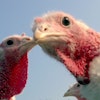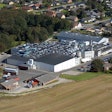Our economy may have improved some since our last article. No official recession has occurred yet, even if it seems like it for some industries and folks. The powers-that-be are paying more attention to the energy price hikes, so something of a regulatory nature may accrue in this election year. Otherwise, supply and demand forces will bring everything back into balance. Demand may be easing now as record high prices take their toll on the consumers' pocketbooks.
First half 2008 provided consumers with plenty of meat to chose from. Supply was up 5 percent from a year ago, led by 11 percent more pork, 7 percent more turkey and 4 percent more chicken. Most meat industries began to cut back by the third quarter and will show negative supplies by early next year. However, the expected 2.7 percent reduction in supply during the first quarter comes from last year's 5 percent increase. Thus the expected reduction will leave slightly more meat supplies than were available in 2007. This assumes a 2 percent increase in ready-to-cook (RTC) weight per bird which occurred in the first four months.
The table showing the weekly RTC slaughter takes into account the number of slaughter days per month. (Most analysts provide quarterly data in their outlook as it smooths out the huge month-to-month differences.) Prices will likely peak this summer unless energy costs move up, which I do not expect unless the world weather this season is abnormal.
Feed costs may exceed those of a year ago as world supplies remain tight. But some restraint in use is expected during the last half of this year. Freight rates hurt exports of grain, but are being replaced by exports of U.S. meat products. The U.S. dollar may strengthen soonor once a new president is in officewhich increases cost of our exports.
Projected U.S. ending stocks to use for corn is 7 percent in 2008-2009, which could mean higher prices than I project. U.S. and world-wide weather in exporting countries will make the difference. Soybean world supply will be greater with expected U.S. ending stocks to use of 6 percent versus 4.8 percent a year ago. Higher prices than in 2006-2007 are assured.



















